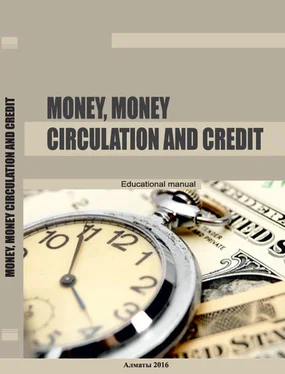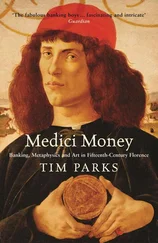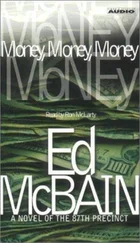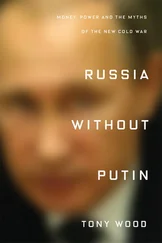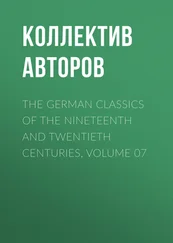To money peculiarities as a mean of circulation first of all we can include the real money appearance in circulation and its evanescence in exchange. In this connection the token money – paper and credit – can perform the velocity function. Here the parallel countermotion of money and goods happens when money is tied to the goods movement. Historically this function generated token (paper) money.
The function of means of hoarding and savings. Money being the universal equivalent i.e. providing its owner the receipt of any good becomes a creation of social wealth. People feel an aspiration to save and reserve money. During the metal circulation this money function played the role of spontaneous regulator of the money turnover – spare money went to treasures and money shortage was filling up by them.
In the conditions of widened commodity reproduction the accumulation (saving and storing) of temporarily disposable monetary resources is a necessary condition of the capital turnover. The creation of money reserves flattens the inequalities and peculiarities of economic life. On a nationwide scale the gold reserve stock creation was required. In accordance with a demonetization of gold the amount of gold hoard gives evidence of the State’s richness and provides trust of residents and nonresidents to the national monetary unit.
Money can perform this function because it has «a perfect liquid- ity» of a nominal value.
Of course there is no use to save money in the countries with growing inflation because it devalues too fast. In consequence it looses its force of attraction in spite of high liquidity. If every day we can buy the lesser quantity of goods on dollar, ruble or tenge people wouldn’t like to save the value too long in a monetary form. There are known cases when in the conditions of hyperinflation the workers claim not for the monthly wages but for daily in order to spend their money before the prices will grow on the next day.
In those countries where the hyperinflation exists the national currency could be almost denied as a mean of hoarding and as a standard of value. In such circumstances an interesting situation appears: the national monetary units perform the functions of circulation and standard of prices but as a mean of hoarding the more stable foreign currency is used bought by the monetary assets holders.
The representative function interweaves and interlinks directly with the function of money as a mean of payment – payment of taxes, receipt and reimbursement of credit, payment of salaries, allowances, payment for utility services. Whereby a money circulation is not accompanied by a simultaneous goods transfer.
Initially this function was performed by the gold money and then by paper and credit. Historically the function of a mean of payment generated the credit money – a kind of token money. Money as a mean of payment has a specific scheme of transfer (G-UPI-G) which is not linked with the goods’ countermotion, i.e. money – urgent proof of indebtedness – money.
According to this scheme in the conditions of developed goods production the goods’ owners are linked to each other and a payment link opening will cause a range of payment failures: one tenge of the State debt will result 5-6 tenge of the other nonpayments.
In the conditions of a legal basis imperfection and an inflation growth in the middle of 90 thof the last century the crisis of nonpayments accrued. Thus in Kazakhstan in the beginning of 1995 the nonpayments amounted 368.2 billion tenge, in 1996 – 533.9 billion, in 1998 – 637.9 billion. From 1998 some decrease occurred – 518.9 billion tenge and on 01.12.2002 – 148.2 billion tenge what was the result of the economic situation stabilization.
The usage of money as a mean of payment was described in detail in «The Russian Truth» (the XI thcentury): «Kunas are needed for payment of viras (penalties), debts and rezas (percents), obrok and render (for plough – ral and yard – smoke)». As the industrial society developed a mean of payment increasingly substituted a mean of circulation.
In the modem economic literature these two functions of money are usually united. It is hard to overshoot the significance of money as a mean of circulation because it allows avoiding a barter form of trade. An exchange of barter on a money trade separates the act of sales from the act of purchase.
If money exists the seller should find somebody who’d like to buy his good and then after money receipt he will buy everything that he’d like. An exchange of barter trade mechanism on a mechanism which uses money as a mean of circulation leads to a circulation cost improvement.
A money exchange demands rather less forces and time then barter. Decreasing the circulation costs money stimulates the development of specialization and trade. Money which performs well the function of a mean of circulation is gladly admitted by everyone. Money gives its owner some purchasing power which is very important advantage.
Money allows making a flexible chose of types and quantity of the purchased goods and either of places and time of shopping and the dealing partners. If some mean of circulation is used for the quite long time period thus its usage becomes stable and depends on the readiness and desire of population to use it.
These are some examples of money unacceptability. In 1970 the U.S. Treasury for two years issued the two dollar banknotes which were suspended from 1966. The Americans didn’t admit these banknotes. One of the reasons was that a two dollar banknote could be easily misrecognized as a one dollar. People obviously preferred the banknotes with a bigger nominal difference, for example between 1 and 5 dollars, but not 1 and 2. Besides many people found the two dollar banknotes unlucky.
In 1979 the U.S. Treasury tried to decrease the emission costs again by a one dollar coin issuing with an image of Susan B. Anthony. A great saving was planed because the coin’s service life is equal to 15 years in average, but the paper notes serve not more than 18 months. Either the U.S. Treasury supposed that the usage of one big coin is much more convenient then of some little. And again this effort was neglected by the population: first of all because this coin was similar to a quarter of a dollar coin by size and they could be easily misrecog- nised; secondly paper money is more preferable than coins.
The function of world money. It is a function of money used on the world market for international relations support. The world money performs three functions:
Of an international mean of purchase – money is used for the goods purchase and sale on the world money for cash;
Of an international mean of payment – money covers the international debts;
Of an international standby fund – money performs the role of an international mean of payment stock. The state gold reserve stock performs this function.
Historically the gold played role of the world money as an external account mean of control. The Paris agreement of 1867 declared only this metal. And such situation kept for quite a long time.
After the World War I stsome other national currencies of different countries joined the rank of world money – the US dollar, the British pound, the French franc. In 1922 it was formalized in legislation by the international agreement in Genoa when the British pound and the US dollar were announced as the equivalents of gold and introduced into the international circulation.
After the World War II ndthe leaders of the biggest states tried to avoid the mistakes which lead to the World crisis of 30 th. On July 1944 in Bretton Woods they created the system of stable exchange rates which was called a «Bretton Woods system».
The member governments of the International Monetary Fund which was created on the same international conference along with the International Bank for Reconstruction and Development fixed their currencies rates in dollars and gold, and the dollar from its side was linked to gold (35 dollars for 1 ounce of gold).
Читать дальше
